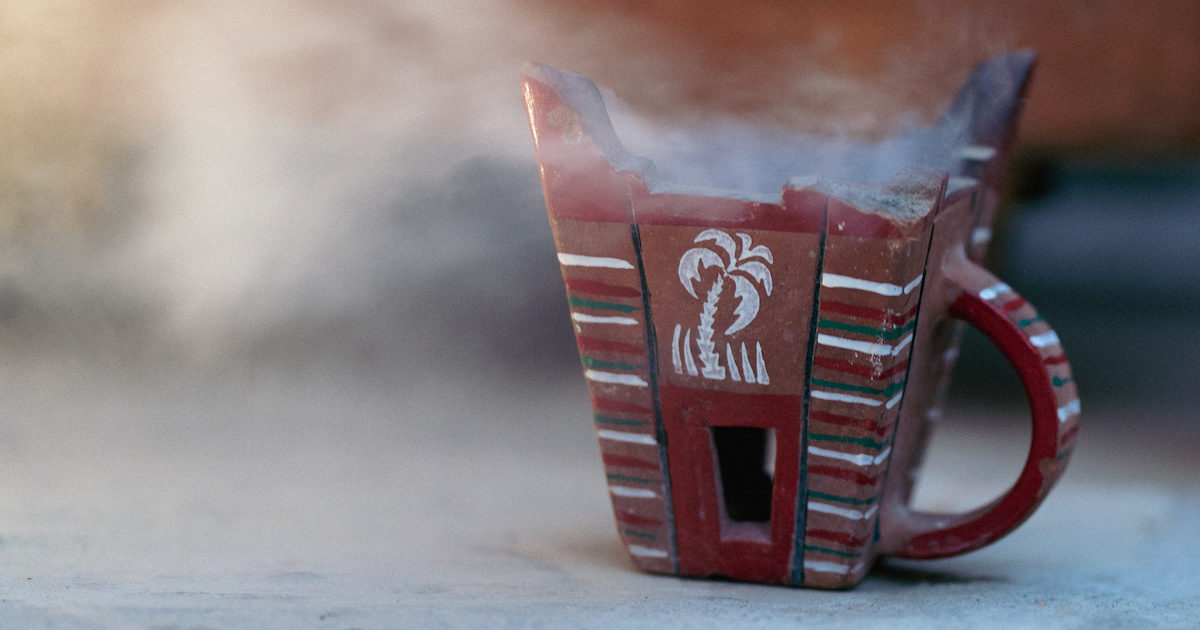Cette publication est également disponible en :
Français
As well as lending itself to burning, drinking and eating, frankincense can be chewed. In Oman the amber tears shed by the aromatic resin take on every form, from intangible to concrete. Al Hojari can be chewed like gum or delicately infused in a bottle of water to be sipped throughout the day. At the Salalah Al Baleed Resort, olibanum is delightfully enriched with gin and rose water.
As for food lovers, they are far from blind to its charms. At the Al Angham Restaurant, Baban and Fort Cafe in Muscat, the dessert menu features ice cream flavoured with Omani frankincense resin alongside profiteroles, caramelised bananas and chocolate sauce. A little further out, on the corniche that borders the capital, the Bait al Luban restaurant, an enthusiastic supporter of local farming and fishing, offers a dinner based entirely on frankincense, to be enjoyed sitting on traditional Omani cushions on the ground.
In the village of Bahla, a few kilometers from Nizwa, Saïd Al Adawi created his first piece when he was only ten. His father liked the incense burner so much it encouraged Saïd to keep going. Today the Adawi brothers’ plant produces over 2,000 incense holders a year. The pieces are among the most celebrated in the country. We talk to him.
Credits: Nez
Director: Eléonore de Bonneval
Videographer: Ateeb Ali
Creative Director: Mathieu Chévara
Video Editor: Jean-Philippe Derail
Sound design: Perfecting Sound Forever
Title design: Vianney Bureau, Mickaël Charbonnier
Amouage: Renaud Salmon, Andras Komar, Dominique Roques, Matthew Wright, Rayyan Alabdullatif
Special thanks to Arielle Lauze.
TABLE OF CONTENTS OF OUR MAIN FEATURE “WADI DAWKAH“
- A panorama of the Land of Frankincense
- Frankincense, Oman’s essence
- Olibanum resin: a panacea?
- Eating Frankincense
- The quintessential scents of Oman
- The Incense Trade Route, by Sterenn Le Maguer-Gillon
- Perfume as a way of life in the Middle East
- Wadi Dawkah, The Land of Frankincense (Podcast)
- Oman, strategically positioned in the Gulf
- Sayyid Khalid: “Wadi Dawkah was chosen to reintroduce frankincense globally”
- Renaud Salmon: “Wadi Dawkah is serving as a pilot project for the Omani frankincense industry”
- Dominique Roques: “Working on a multifaceted project focusing on frankincense trees is a wonderful opportunity”








Comments